On our second morning in the Tetons, we roused ourselves well before first light. We didn’t break down our camp, and we didn’t bother with breakfast. Instead, we just jumped in the Jeep and took off, because on that particular morning, I had a plan! The day before, we’d taken a back road to our campground, a dirt road called Mormon Row. It got that name because it led through an area that was once farmed by Mormon homesteaders, beginning back in the 1890’s, until the time when the National Park was created, in 1950. Several of the original buildings, including this log cabin (below), have been largely restored, one of a number of historic attractions within the park boundaries.
Mormon Row crossed a section of open grazing land, between the Gros Ventre River and the mountains. There was an unimpeded view of the Teton Range, beautiful at any time of day, but it seemed to me that it would be a perfect vantage point for photos of the mountains at sunrise. Better yet: I’d seen some buffalo in the fields. There were just a few, and they were off at a distance, but that struck me as a terrific opportunity. “If they’re still there tomorrow morning,” I said to my friend, “maybe we could get pictures of buffalo, and the sunrise, and the Tetons, all at the same time! How cool would THAT be?”
We decided it was worth losing a little sleep to find the answer to that question, so that next morning, we braved the dark and the pre-dawn chill, and we drove five miles or so to a point where Mormon Row intersected another dirt road. We turned onto that one, more of a dirt track, really, and proceeded a few hundred yards deeper into the field. I killed the lights, and shut off the engine. My instincts about the sunrise were dead on. The sky was clear as crystal, just beginning its slow transition from night to day. To the east, the limitless expanse of magnificent Wyoming sky slowly brightened through a palette wheel of rose-pink and orange, tinged with glowing bands of gold. To the west, the saw-tooth profile of Grand Teton and her sisters rose up sheer from the plain, one of the most insanely beautiful mountain views you’ll see anywhere. It was mid-August, already late in the abbreviated season, and those jagged peaks twinkled like bejeweled castles as the bright rays of dawn bounced back off pockets of glacial ice still clinging to folds and crevices near the summits.
It was a breath-taking sight, worthy of a hundred photographs, and yet—I’m being honest, here–I barely noticed it! Those buffalo I’d seen the day before? Those were just the advance scouts. Overnight, the troops had arrived, and they were everywhere we looked, on both sides of the road, in the middle of road, surrounding my Jeep in every direction, almost close enough to touch. Big ones, small ones, short ones, tall ones, more buffalo than I’d ever seen in my life, all of them there in one spot, like a huge family reunion. As the sun came up, it dawned on me (sorry) that the place I’d chosen to observe the sunrise was smack in the middle of an honest to god herd of wild buffalo! I hadn’t realized that such a thing still existed, but there they were, hundreds of them! It was a spectacle of the sort I might have expected on the plains of Africa, certainly not in the middle of America, in a place that’s so easy to drive to! Most of the great hairy beasts were ignoring us, but there was one in particular, a big mama cow, who was giving me the stink-eye:
We were apparently too close to her yearling calf, so we backed up a little. Not a lot, just a little, and she went back to her business, which was, basically, eating.
Those buffalo were eating machines. We lost all track of time, watching and snapping away as that herd of buffalo proceeded to do all the things that buffalo do. Some of them were running around, raising dust:
Mothers were nuzzling what appeared to be newborn calves:
Young bulls were fighting one another, locking horns:
This was wildlife behavior at its most uninhibited, and there we were, with ringside seats! After an hour or so, several other vehicles showed up: wildlife photo safari outfitters out of Jackson Hole. They had four-wheel drive vans with roof hatches so their clients could stand up through them and take their photos from an elevated perch, at a safe distance from the unpredictable, potentially dangerous animals. I checked into it later, and those folks were paying an average of five hundred bucks apiece for a half day excursion, and the opportunity to take the same pictures we were taking for free. Wait. Scratch that—they were not the same pictures. Ours were bound to be better, because we were out there earlier, and were better able to take full advantage of the magical golden light of the sunrise. Realizing that? I felt pretty darned smug about the whole deal.
We stayed out there most of the morning, but that was all the time we had to spare. My friend had a flight to catch the next day, and we still had a five hour drive to Salt Lake City. After we packed up our camp site, I had an opportunity to talk to a Park Ranger about what we’d seen. I was particularly curious about why all those animals had shown up out there so abruptly, literally overnight.
“This is the first day of hunting season,” the Ranger explained. “As of six o’clock this morning, Buffalo outside the park are fair game. Those old bulls are so darned smart, they know exactly when to lead the herd down here to Antelope Flats, where they’re protected.”
“I’ve seen wild buffalo before,” I said. “But never so many in one place.”
“The area around Yellowstone has the largest population of wild bison in the country,” the Ranger explained. “All descended from the last survivors of the big herds that used to run free on the Plains. But the main reason so many are out there together today is because this is the rut. Better known as mating season. It happens every year right about this time.”
My friend and I looked at each other and grinned, as the light bulb flashed on over our heads. That actually explained quite a lot, and the scene we’d witnessed suddenly made a lot more sense. All that head butting and running around by the young bulls? They were fighting over the cows! And how cool was THAT?
Wildlife photography is a wonderful specialty that can be incredibly rewarding, but it can also be a tough nut to crack. You don’t too often find wild animals, especially large mammals, in convenient locations, so for us to have literally stumbled across such a spectacle, without even getting out of my Jeep? Talk about an unbelievable stroke of good luck! If we had done our due diligence and studied up on the park and it’s many attractions before we went there, I’m sure we could have found out about the buffalo herd at Antelope Flats. We could have found out about the timing of the rut, and all the rest of it. With the internet? That sort of information is easy to get—all you have to do is look for it. We could have planned our photo shoot, set up for it, and no doubt we would have gotten even BETTER pictures. But if we’d done that? We would have missed out on the jaw-dropping surprise of a completely unexpected herd of wild buffalo! At sunrise! In the Grand Tetons! That kind of a surprise? It’s almost enough to make your eyeballs explode. It’s just about the very best feeling there is, in this whole big beautiful world!
Warning: Bison are wild animals. They are large, unpredictable, and potentially dangerous, so do NOT attempt to get too close for the sake of a photograph. Use a telephoto lens, and always maintain a safe distance of at least 25 yards.
A partial map of Grand Teton National Park (Courtesy of the National Park Service), showing the location of that Bison herd during my visit in 2015. If you’re ever in the area in the middle of August? Check it out! You just might get lucky.
Click any photo in the slide show below to expand the images full screen:
(Unless otherwise noted, all of the images in these posts are my original work, and are protected by copyright. They may not be duplicated for commercial purposes.)
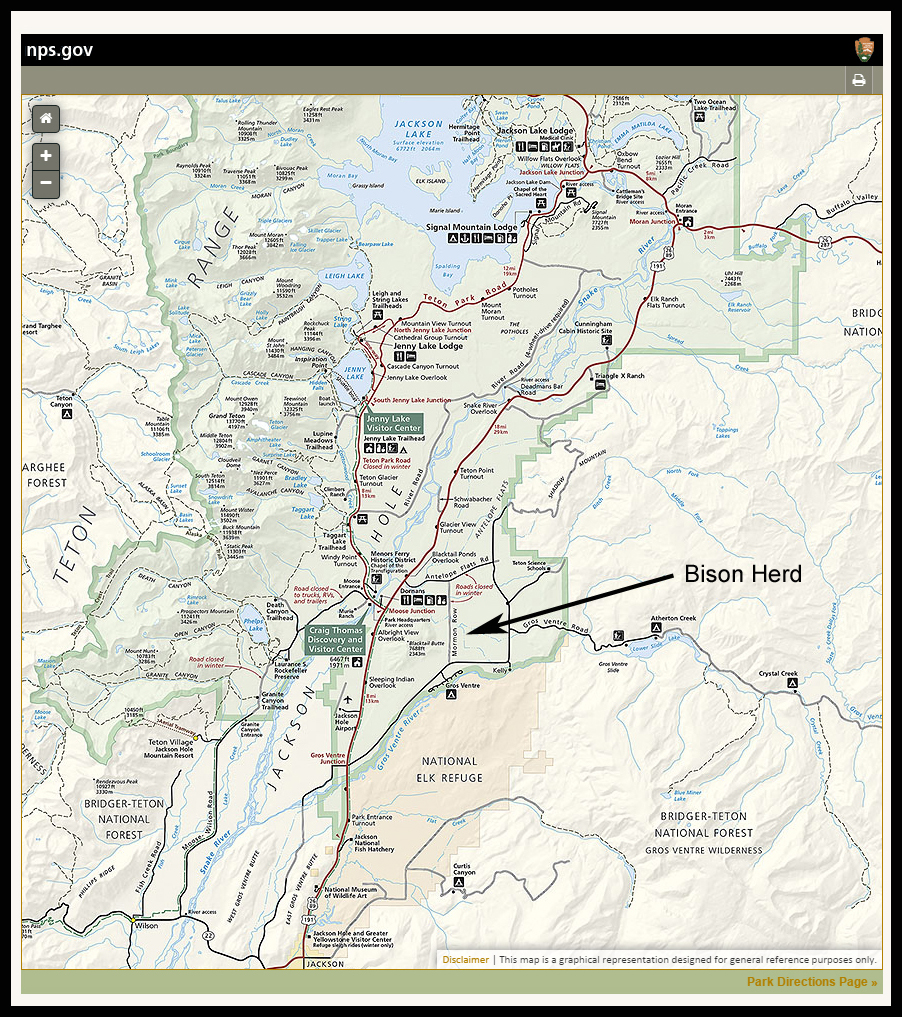
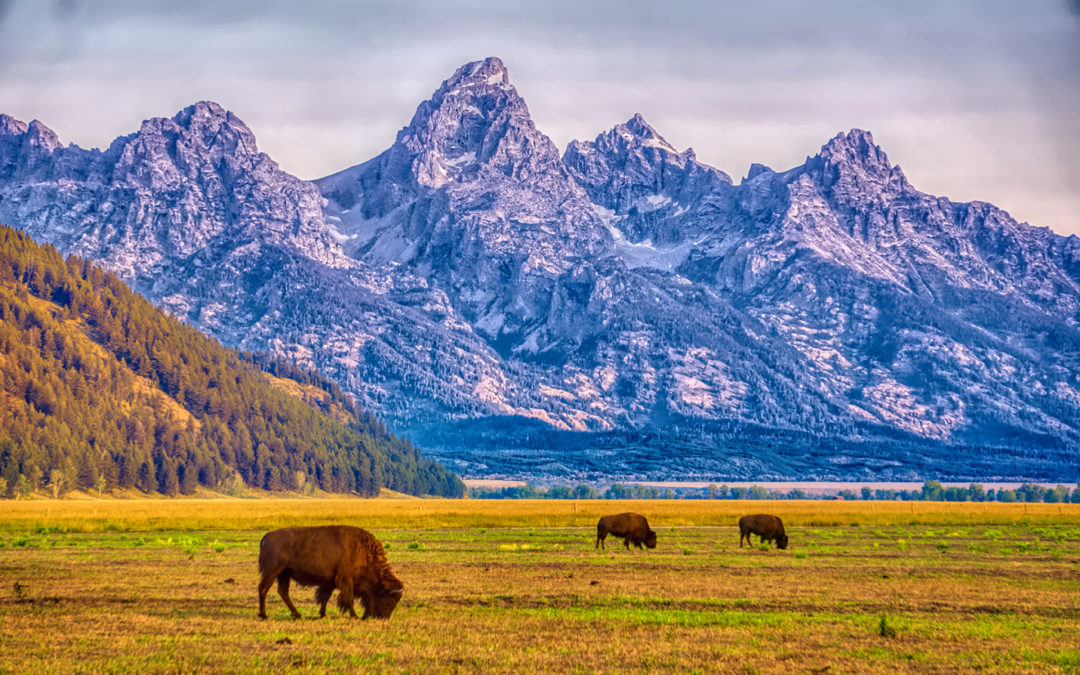
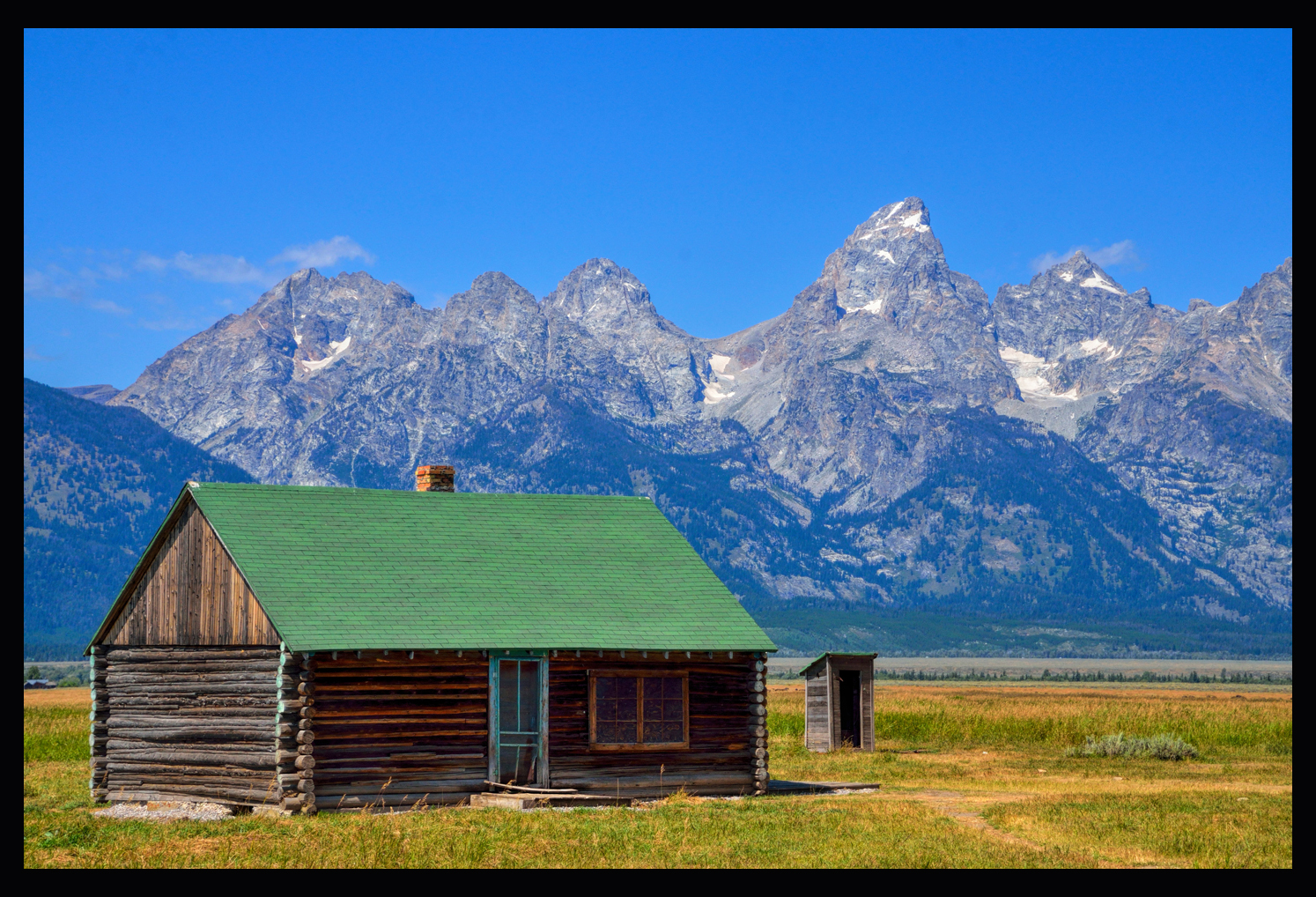
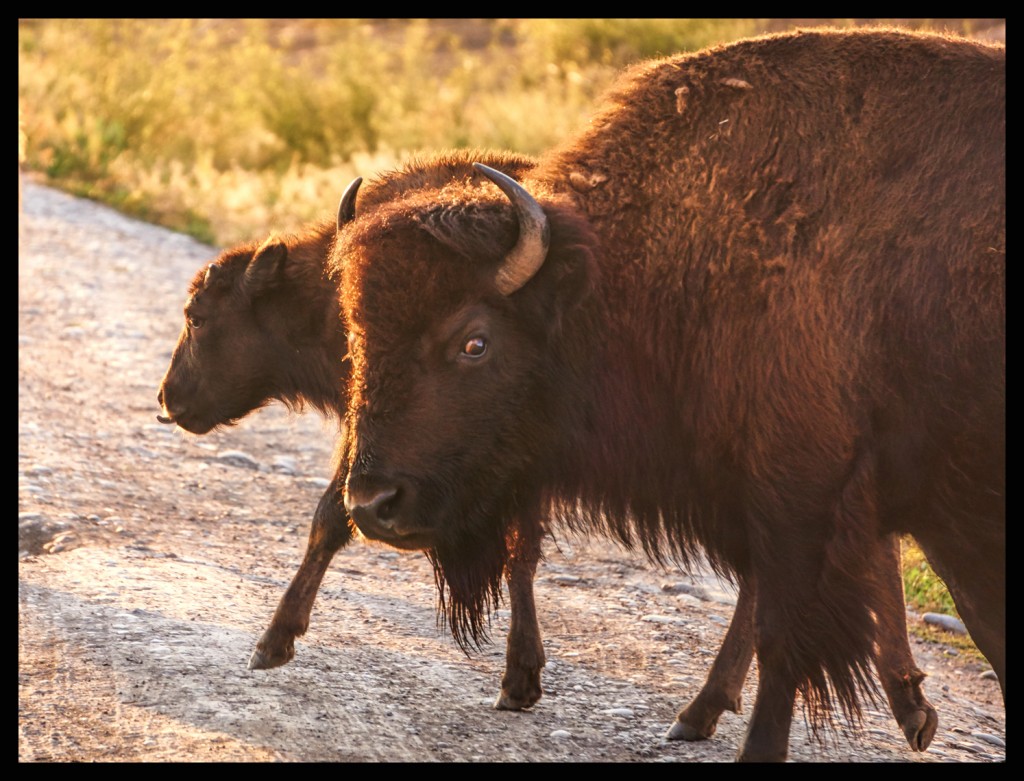
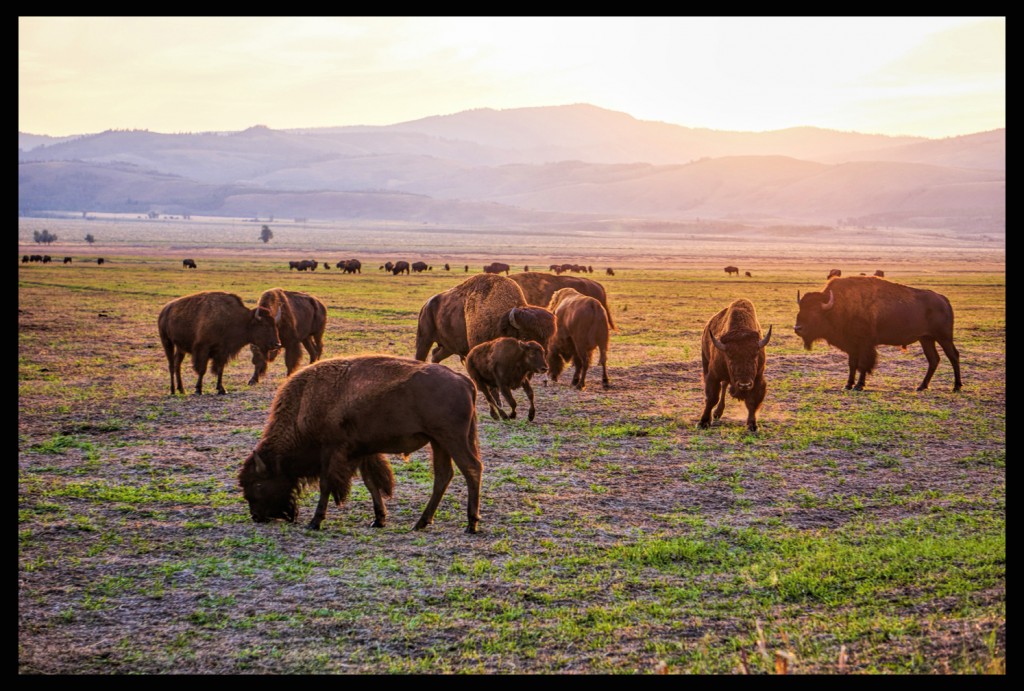
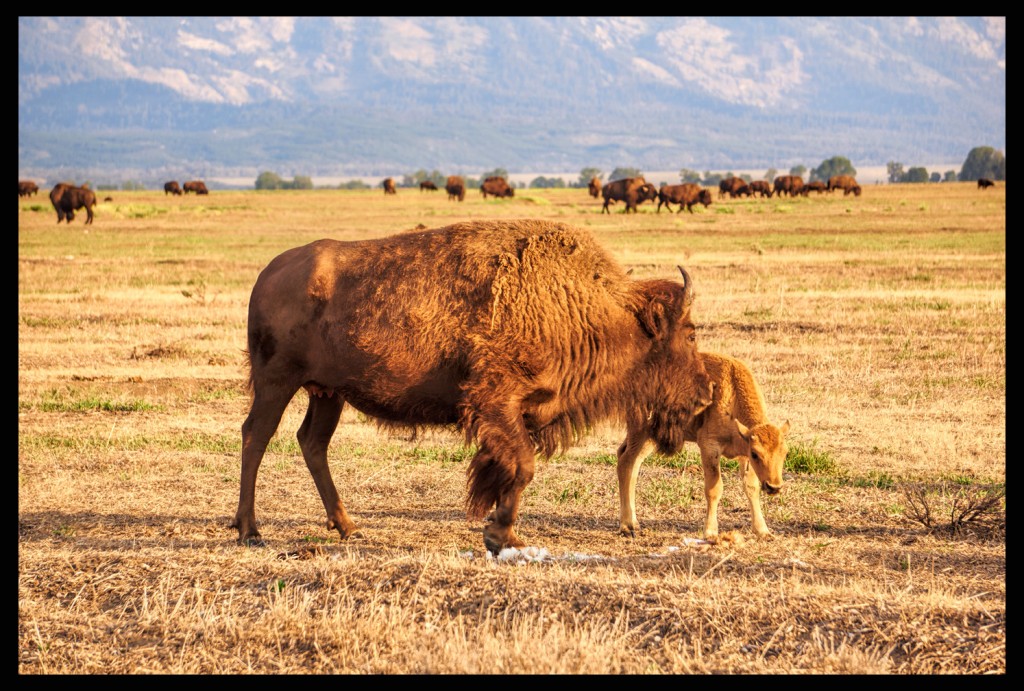
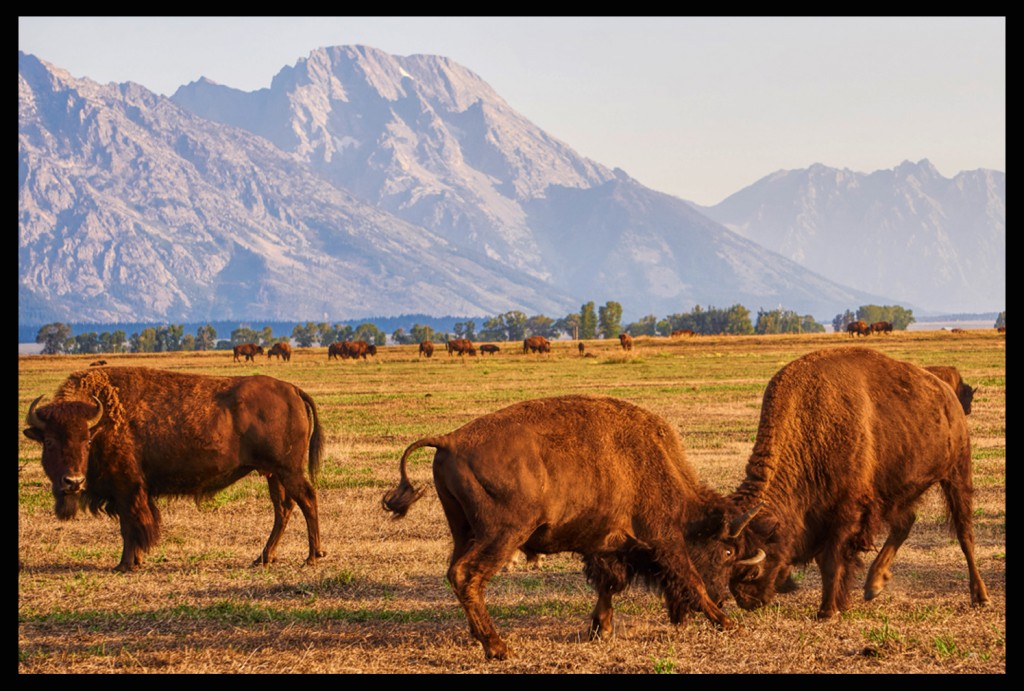
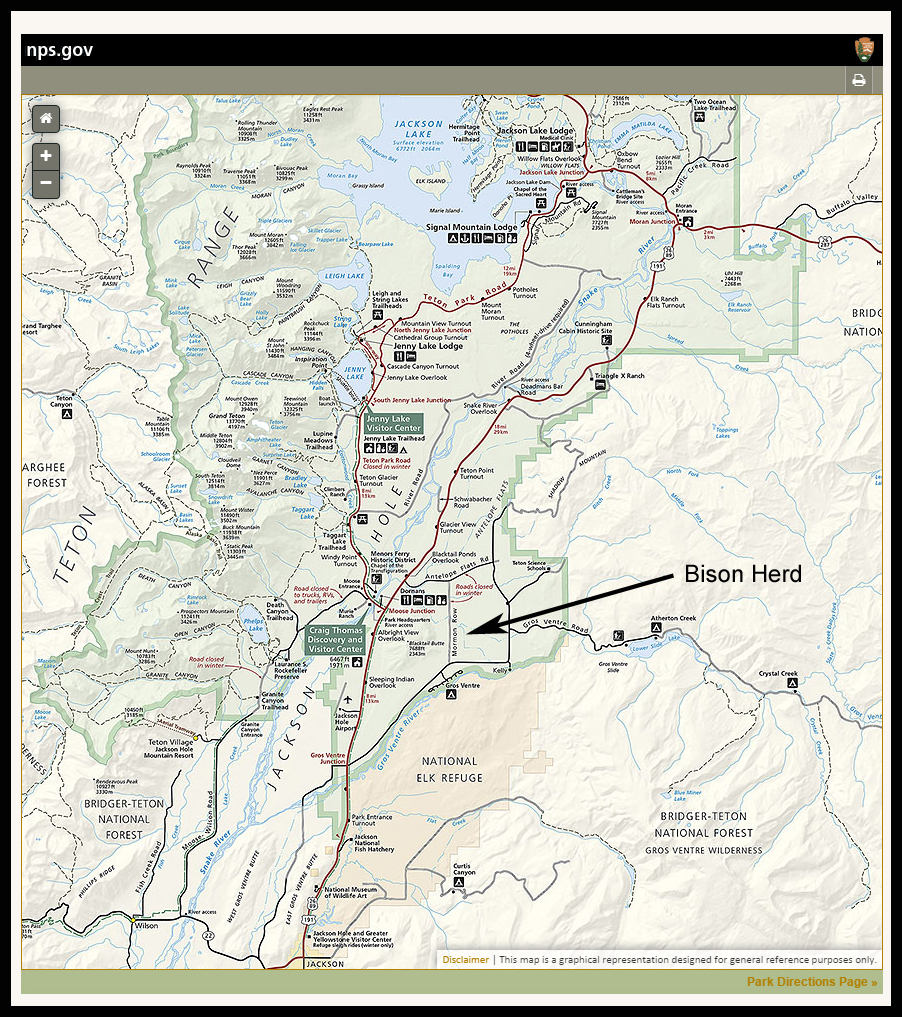
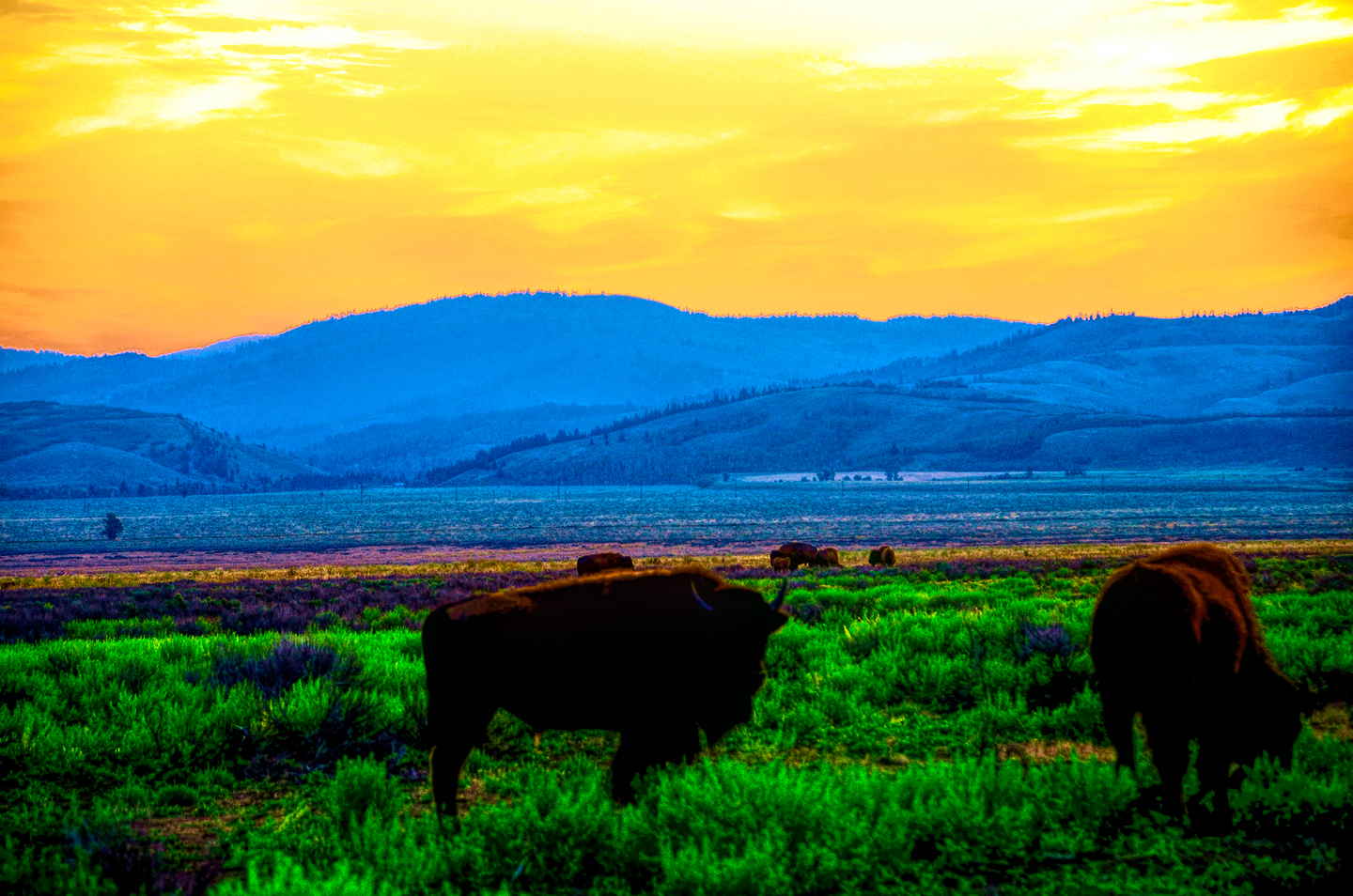
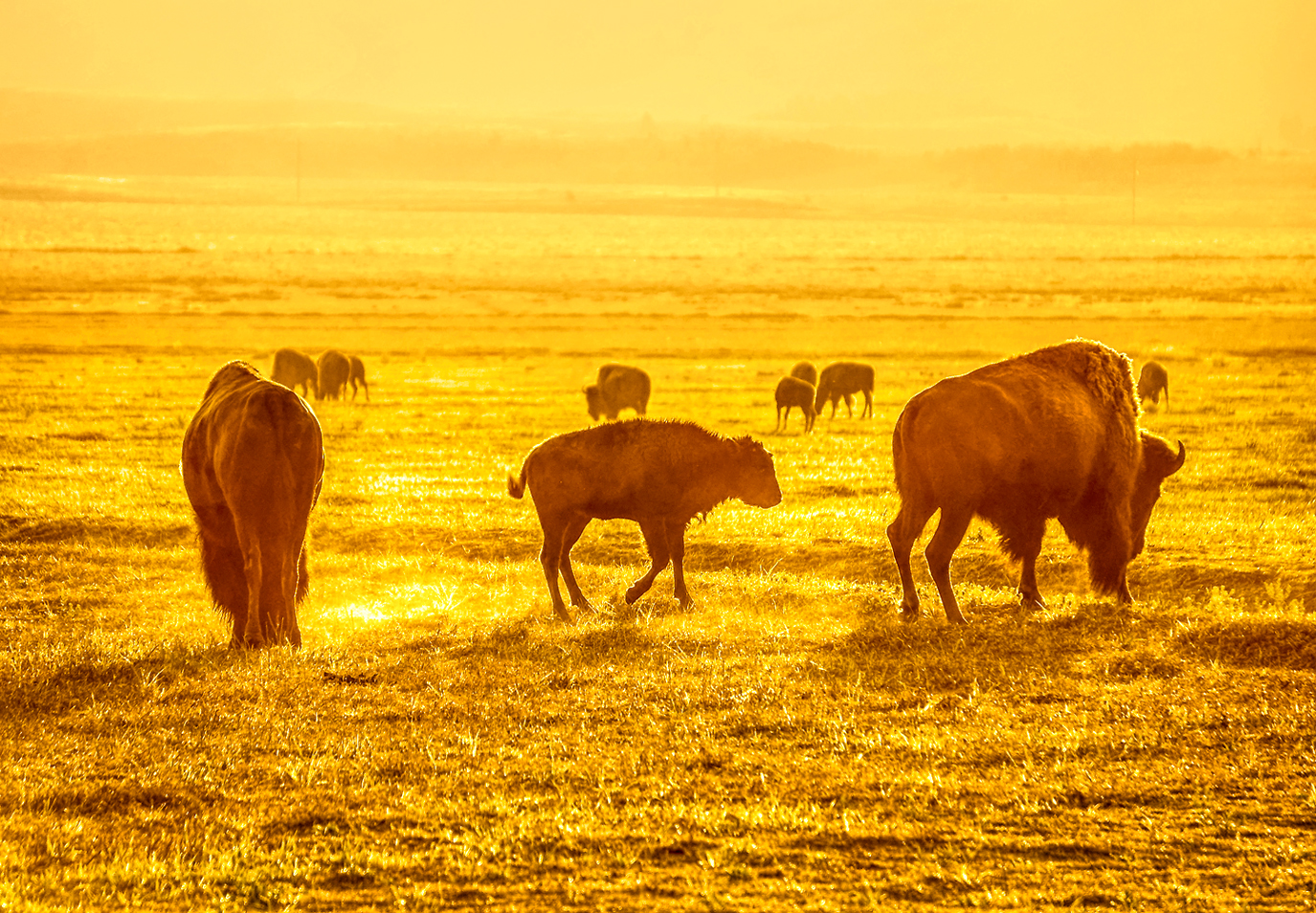
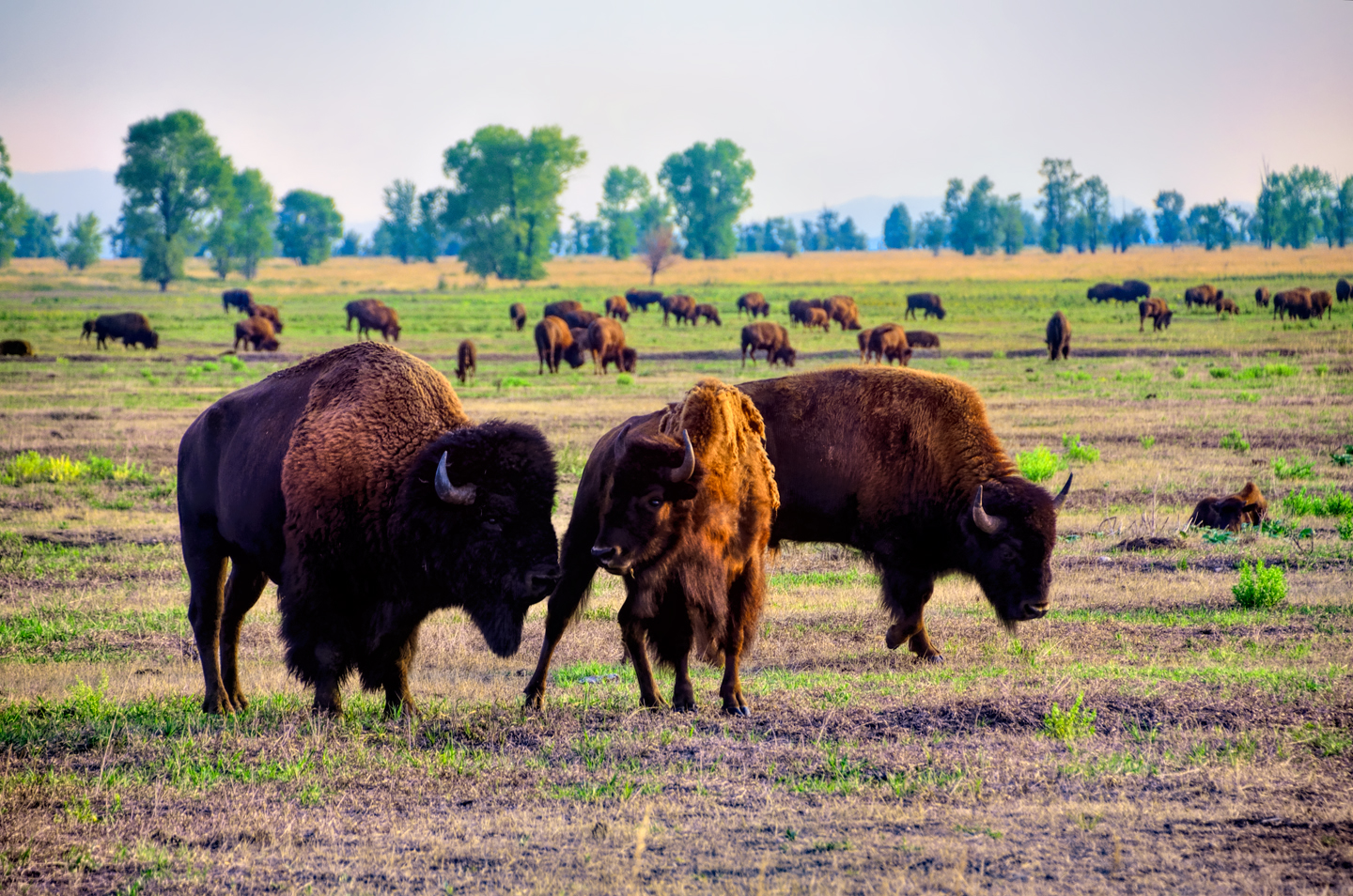
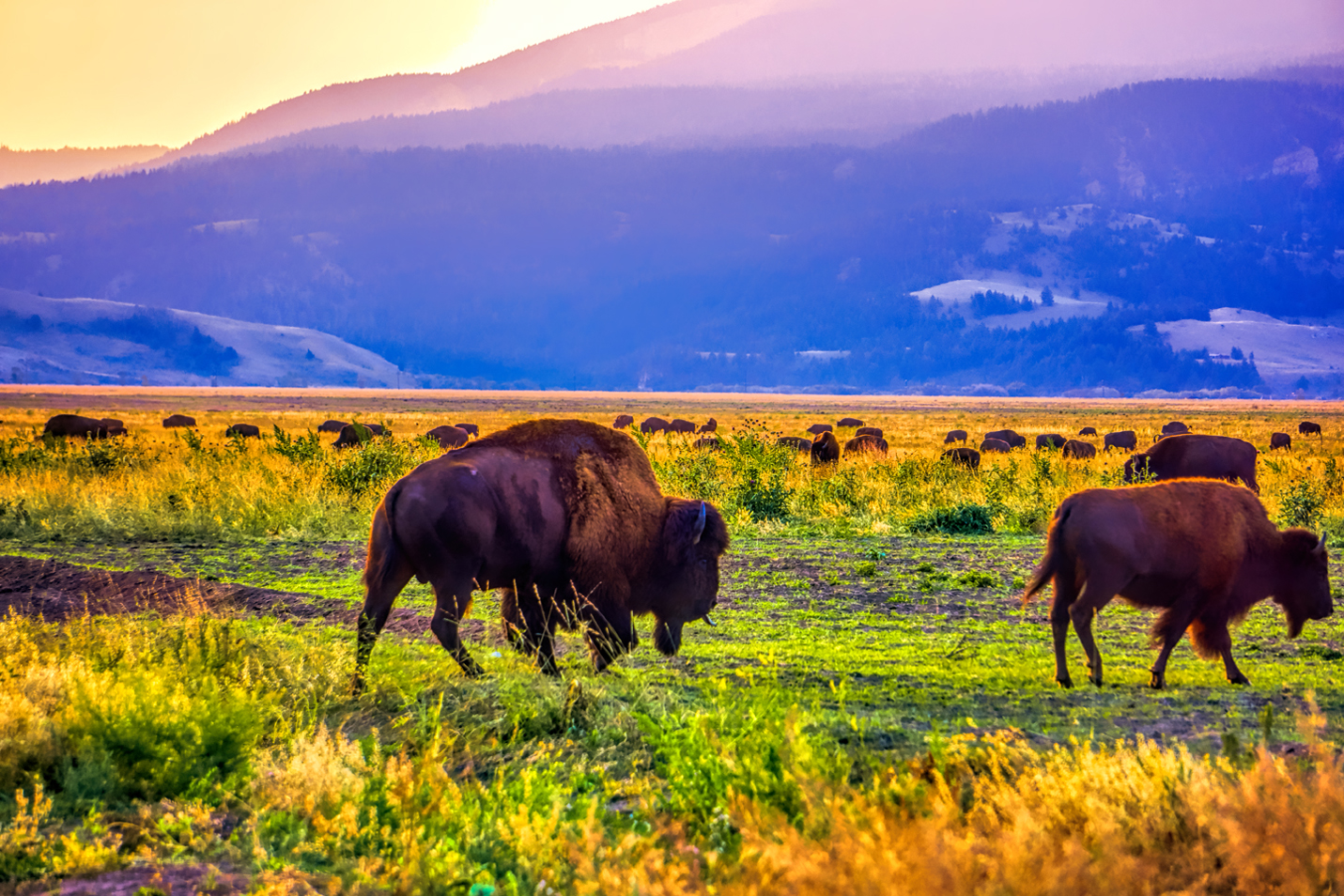
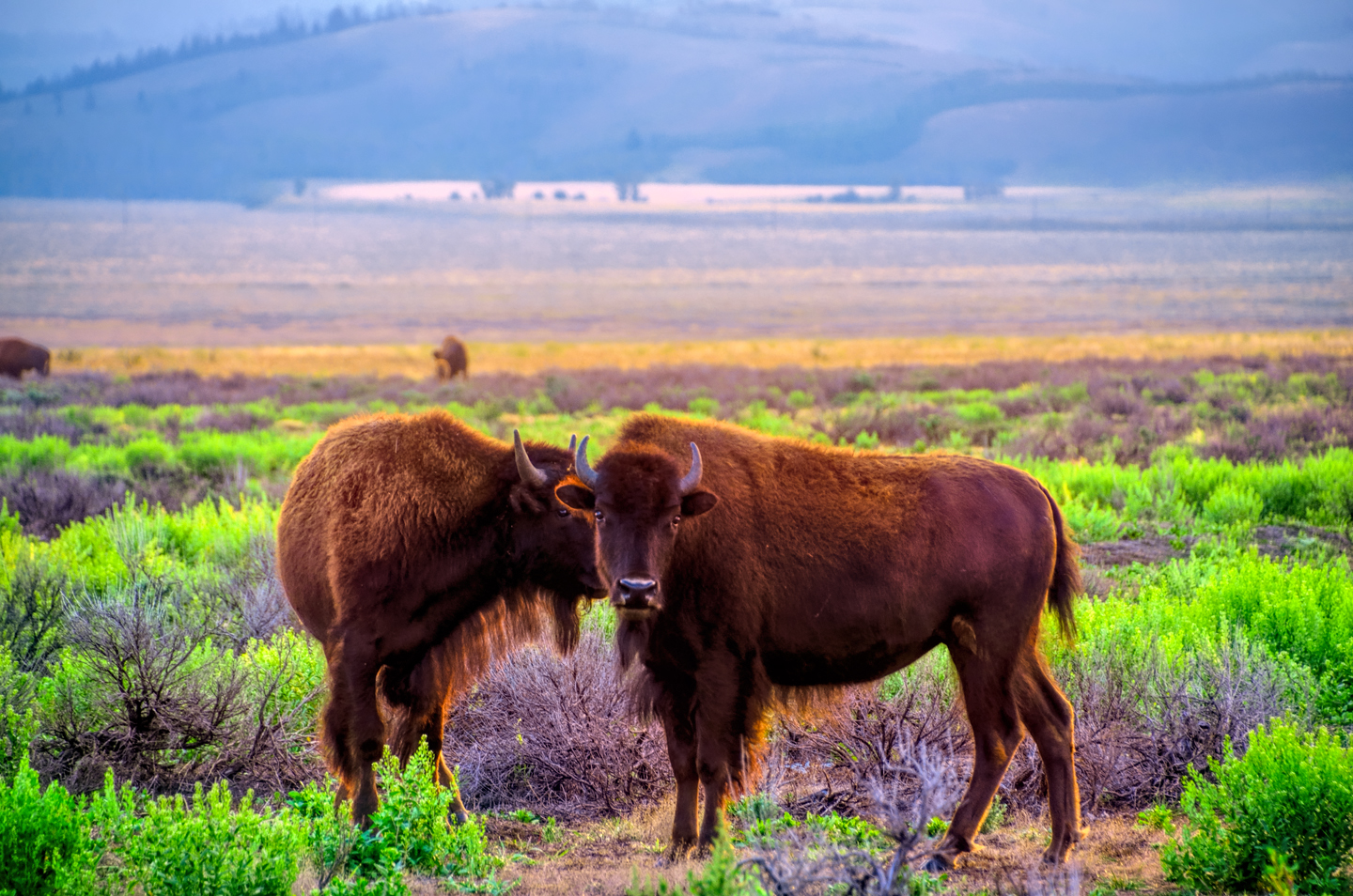
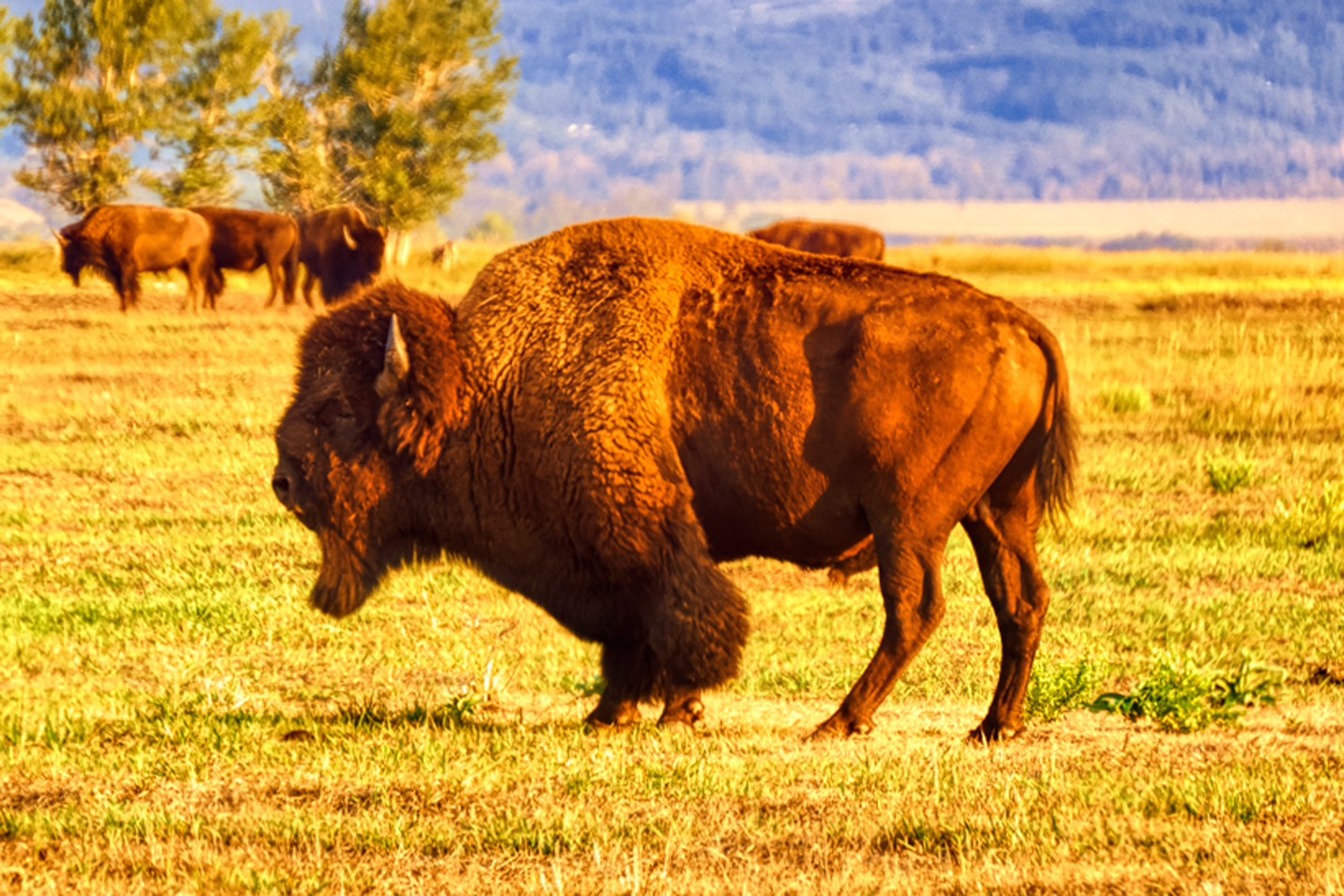
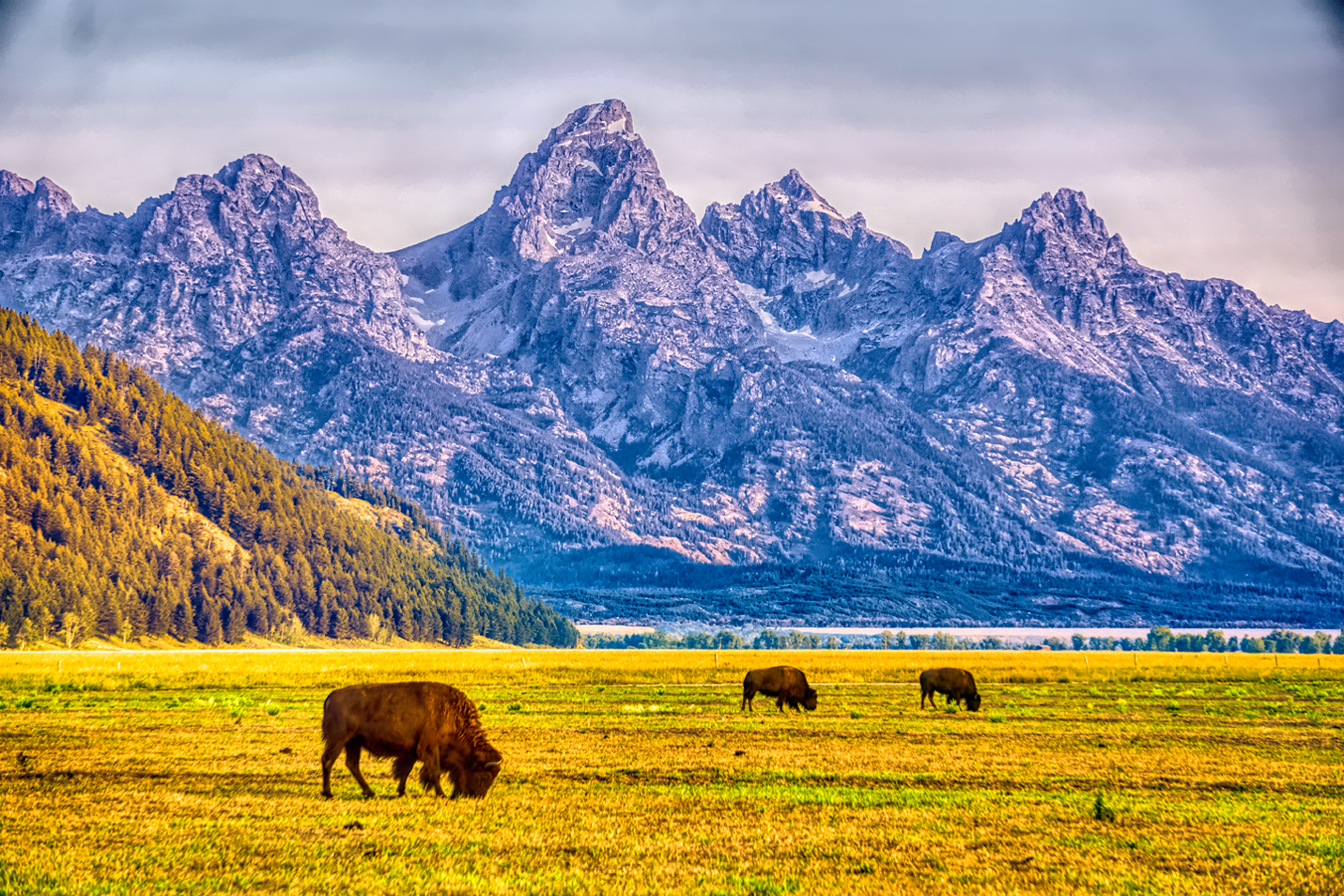
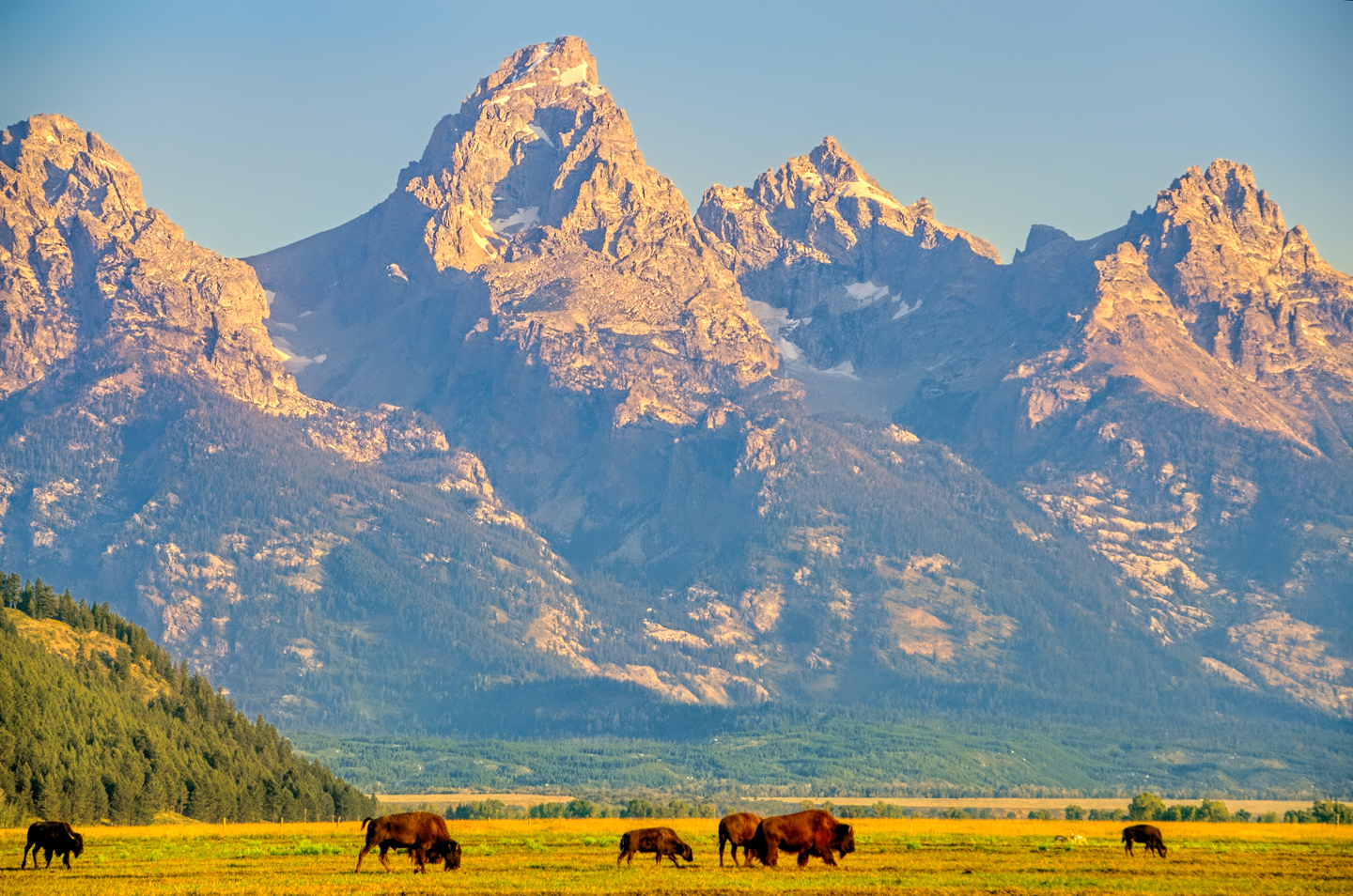
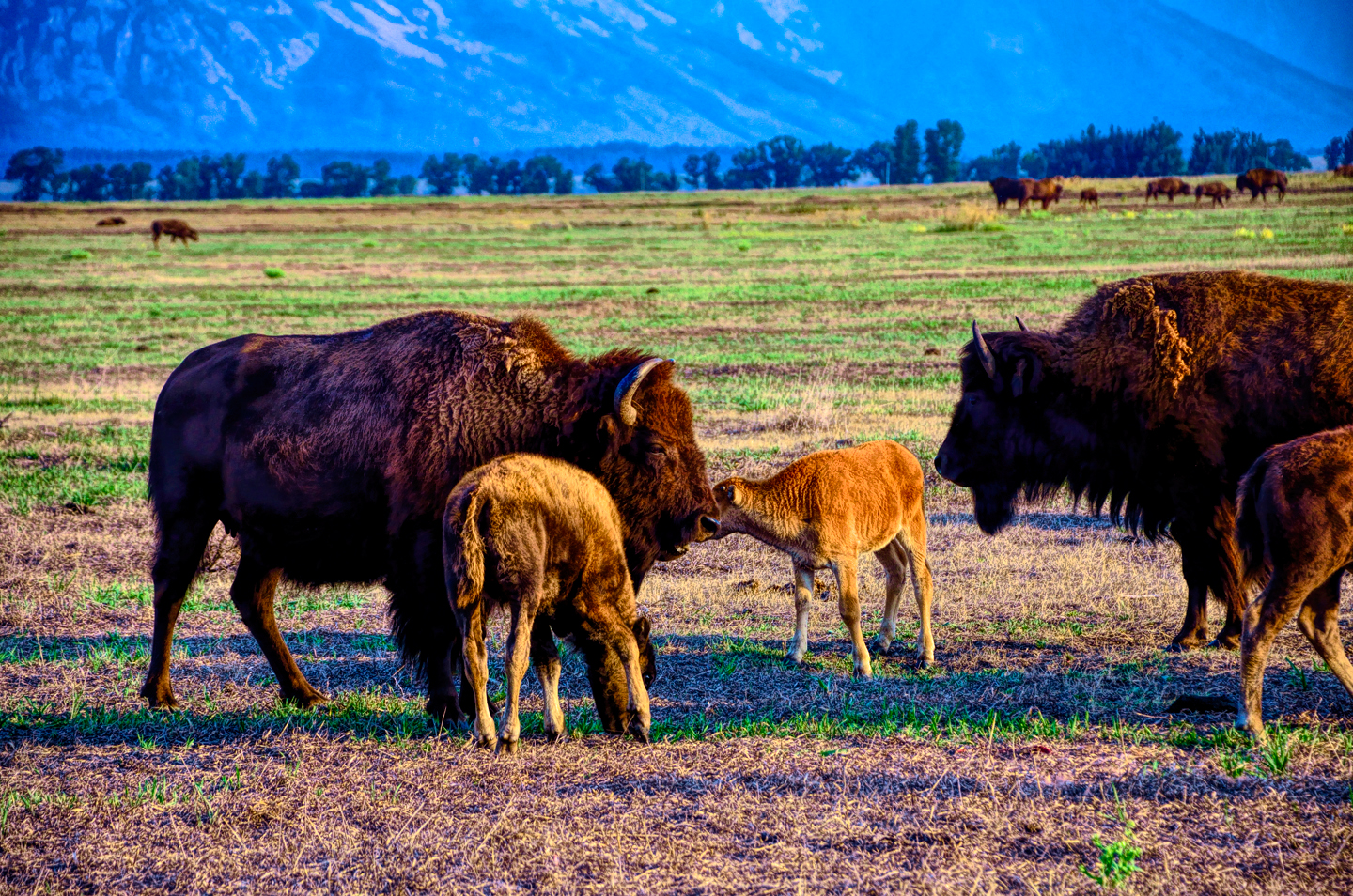
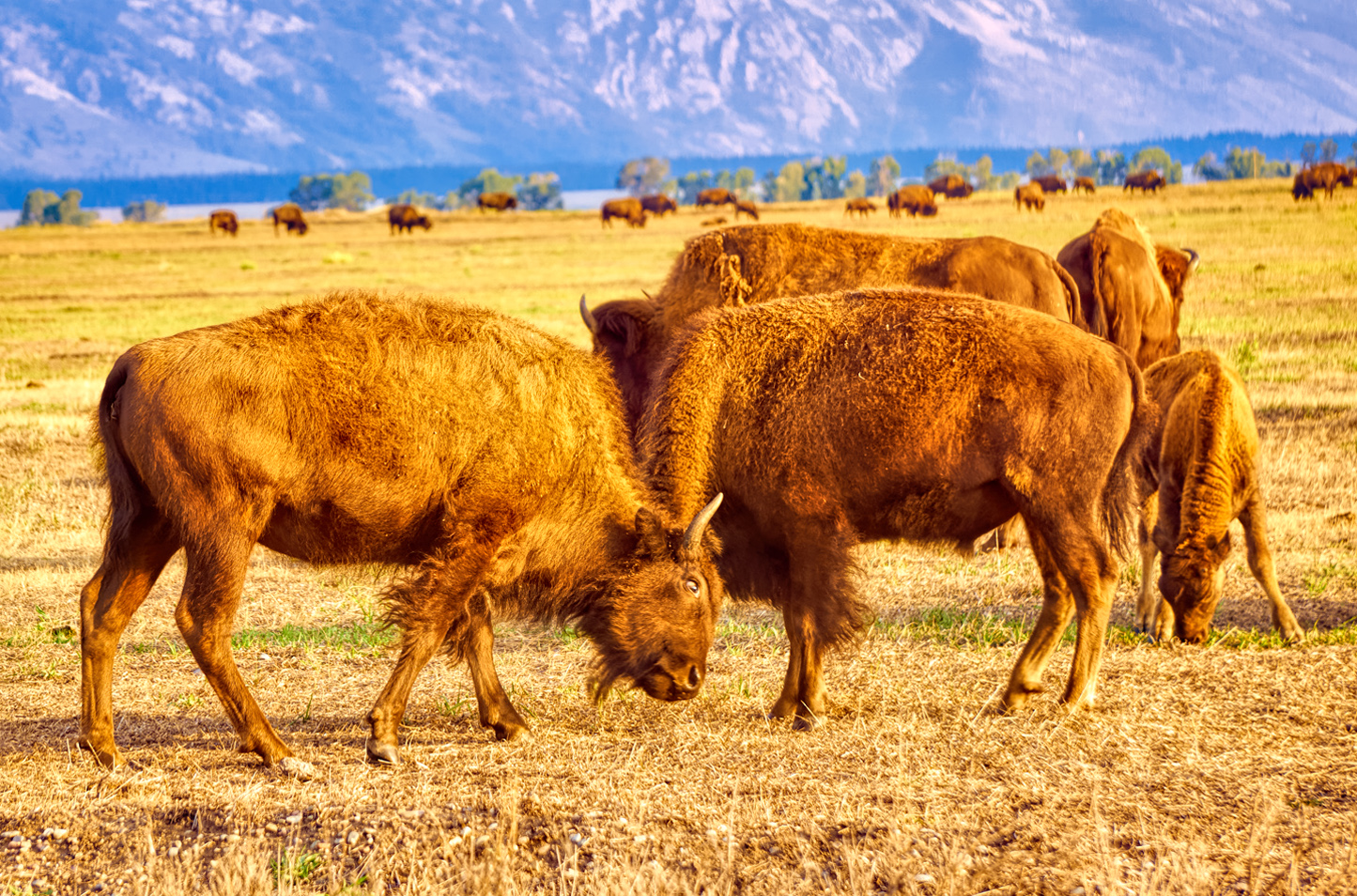
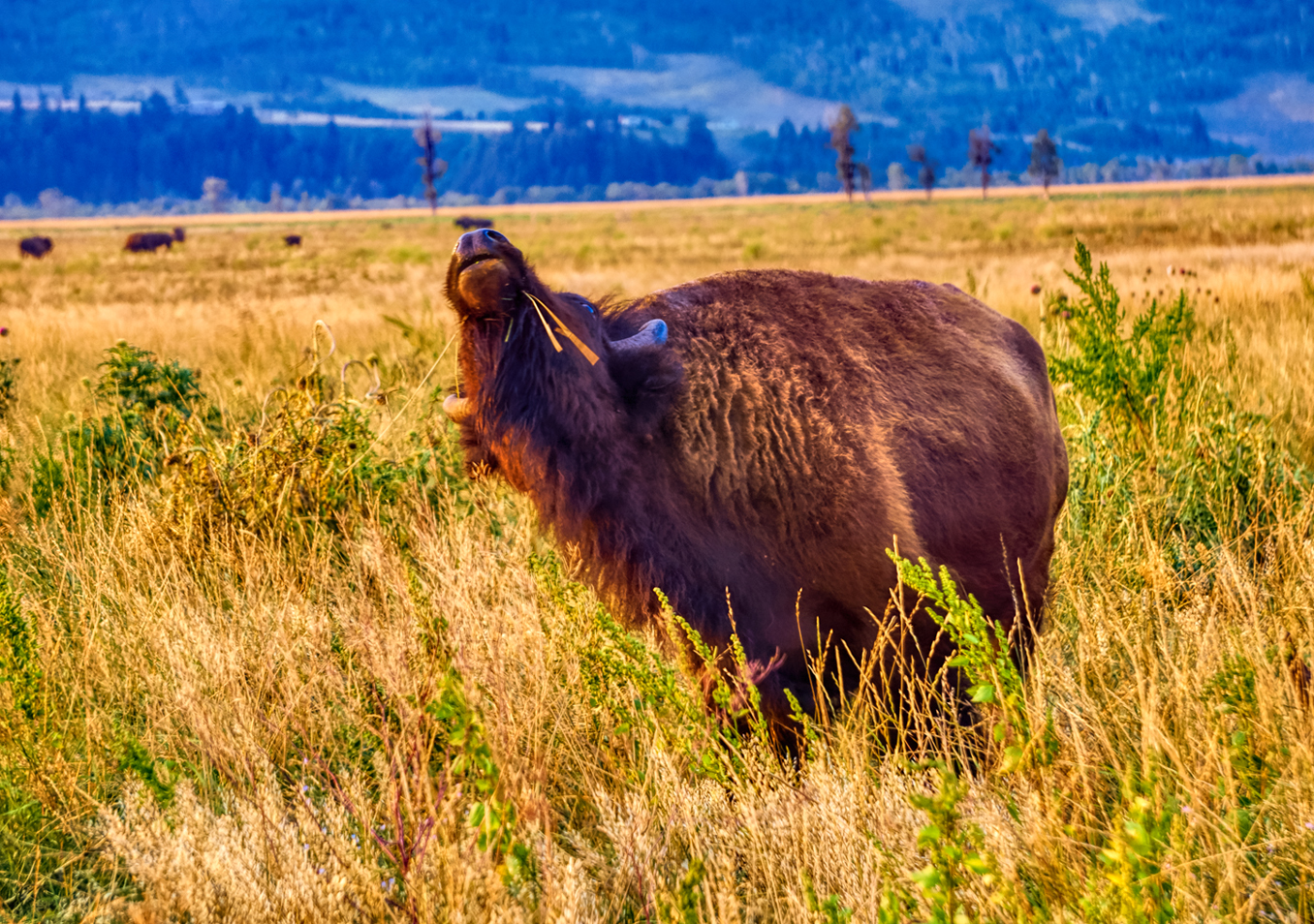
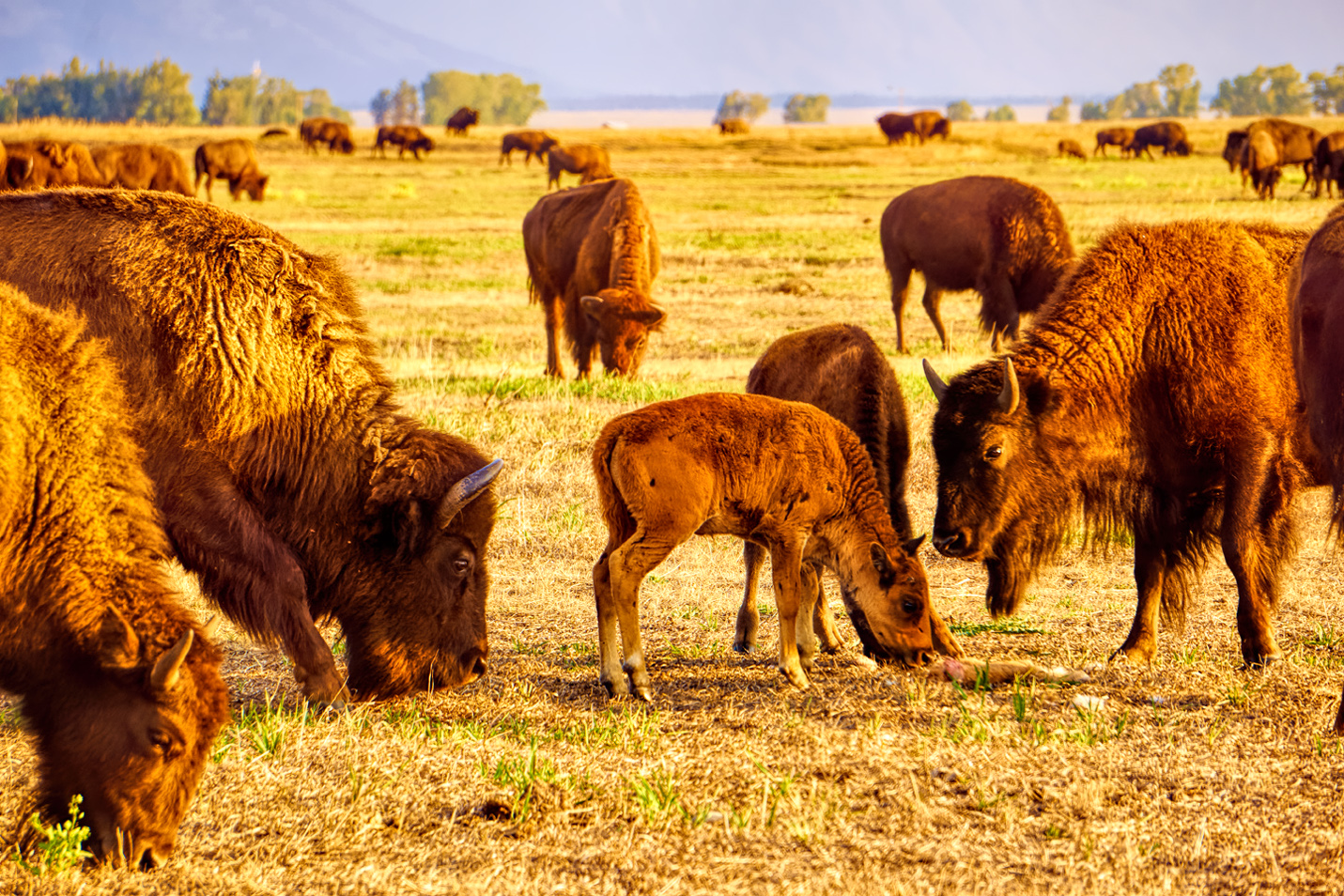
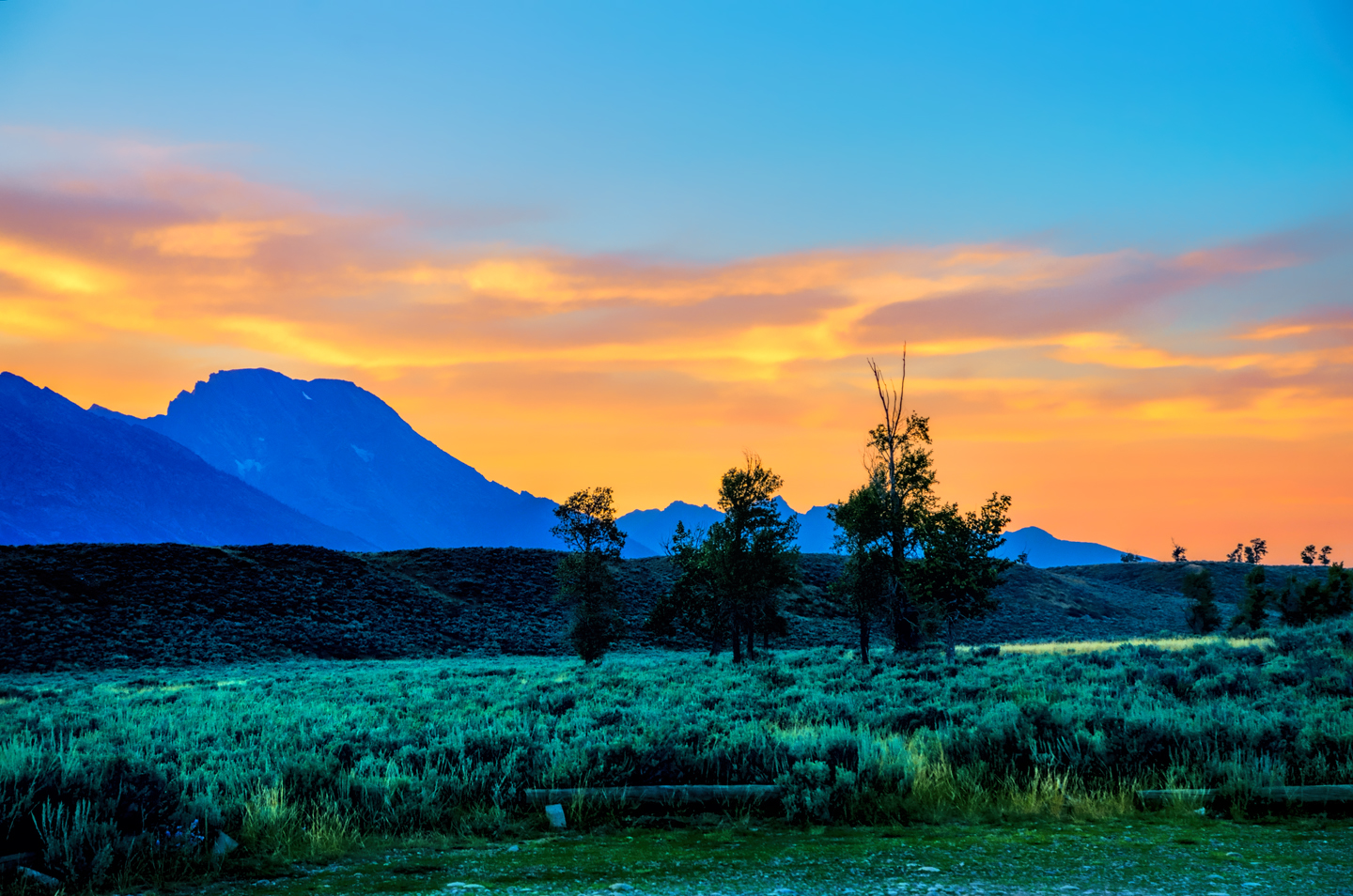
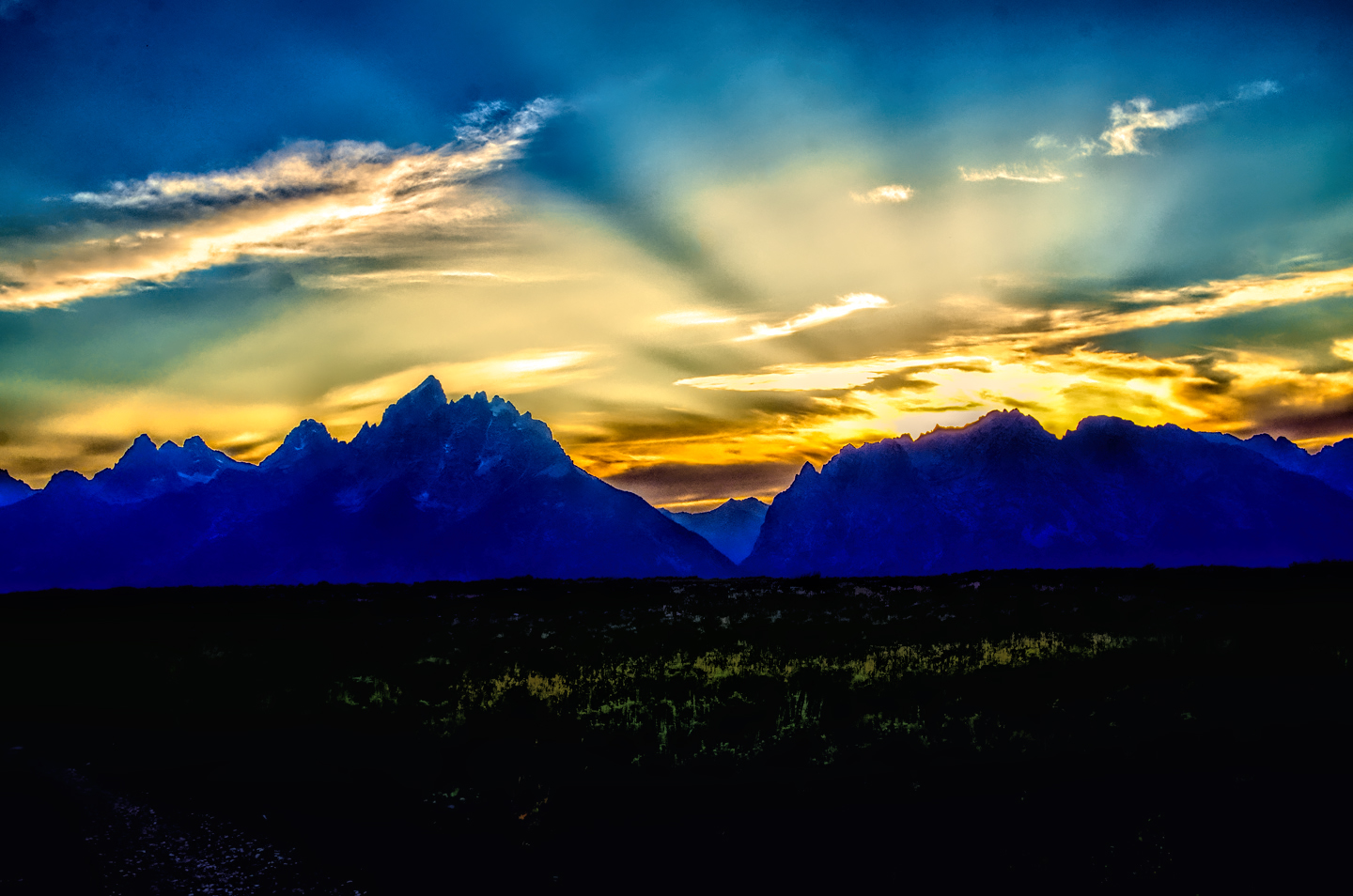
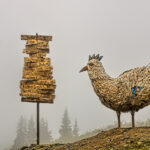
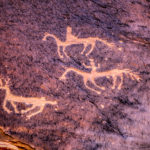
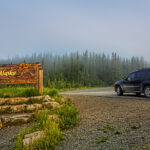
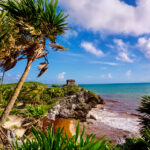
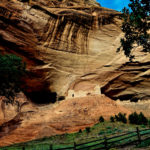
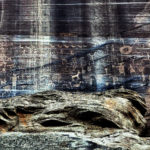
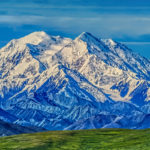
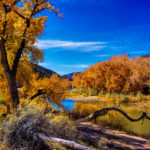
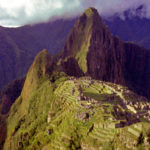
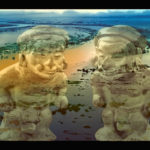
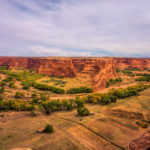
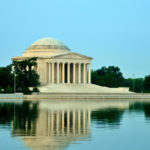
I’m there with you, brother!
Carry on my friend you are absolutely living the dream. Thanks for keeping the rest of us so entertained.